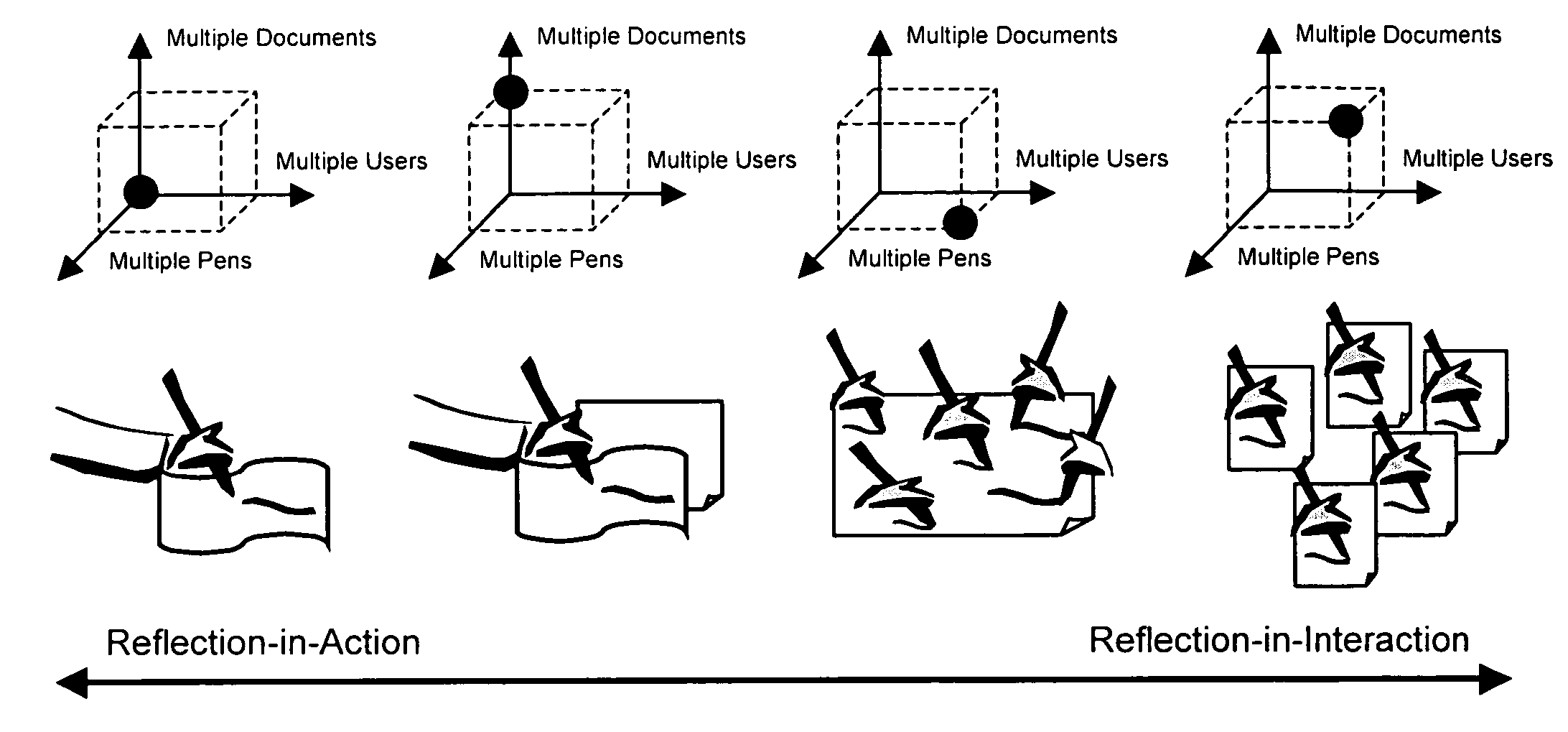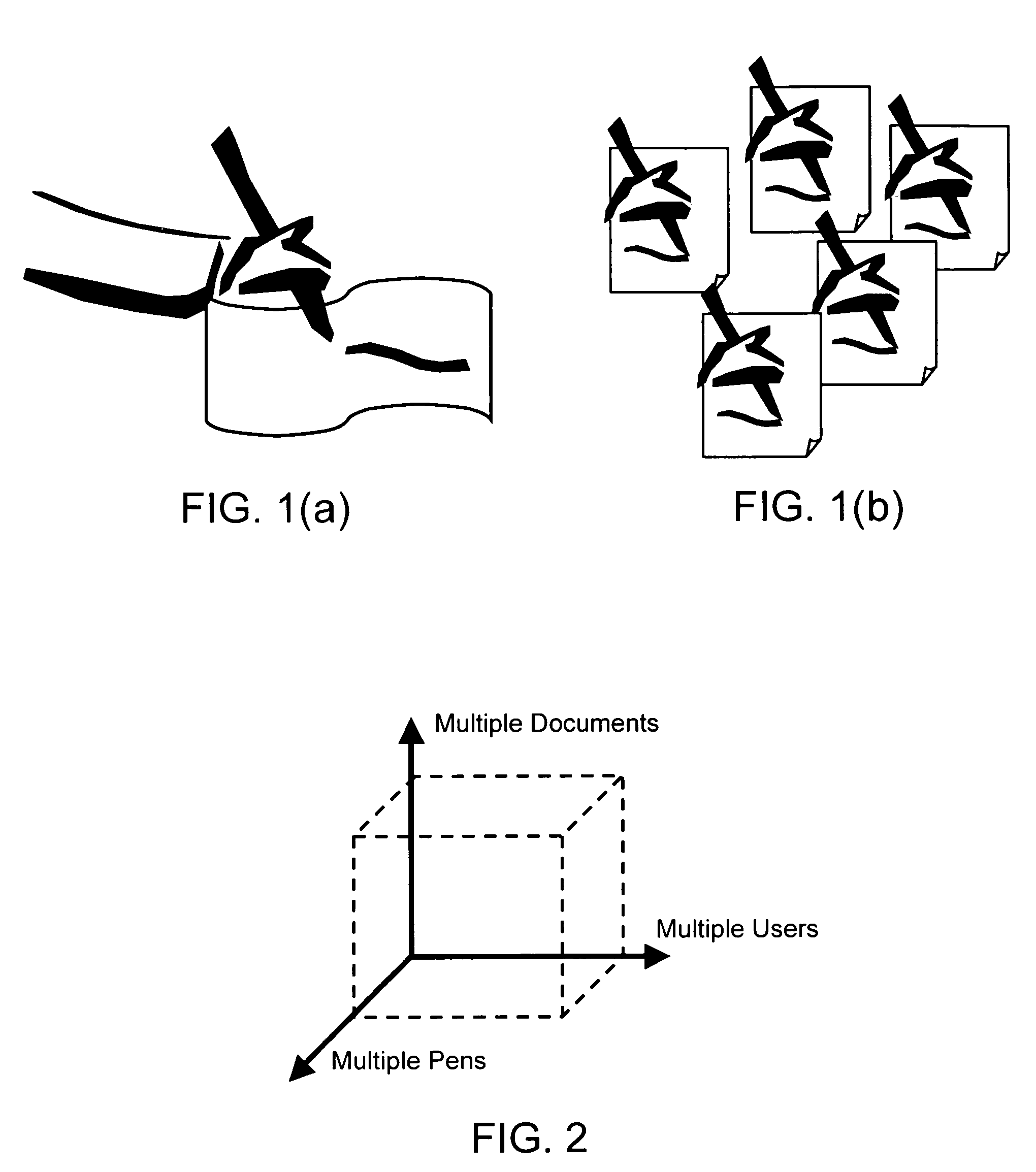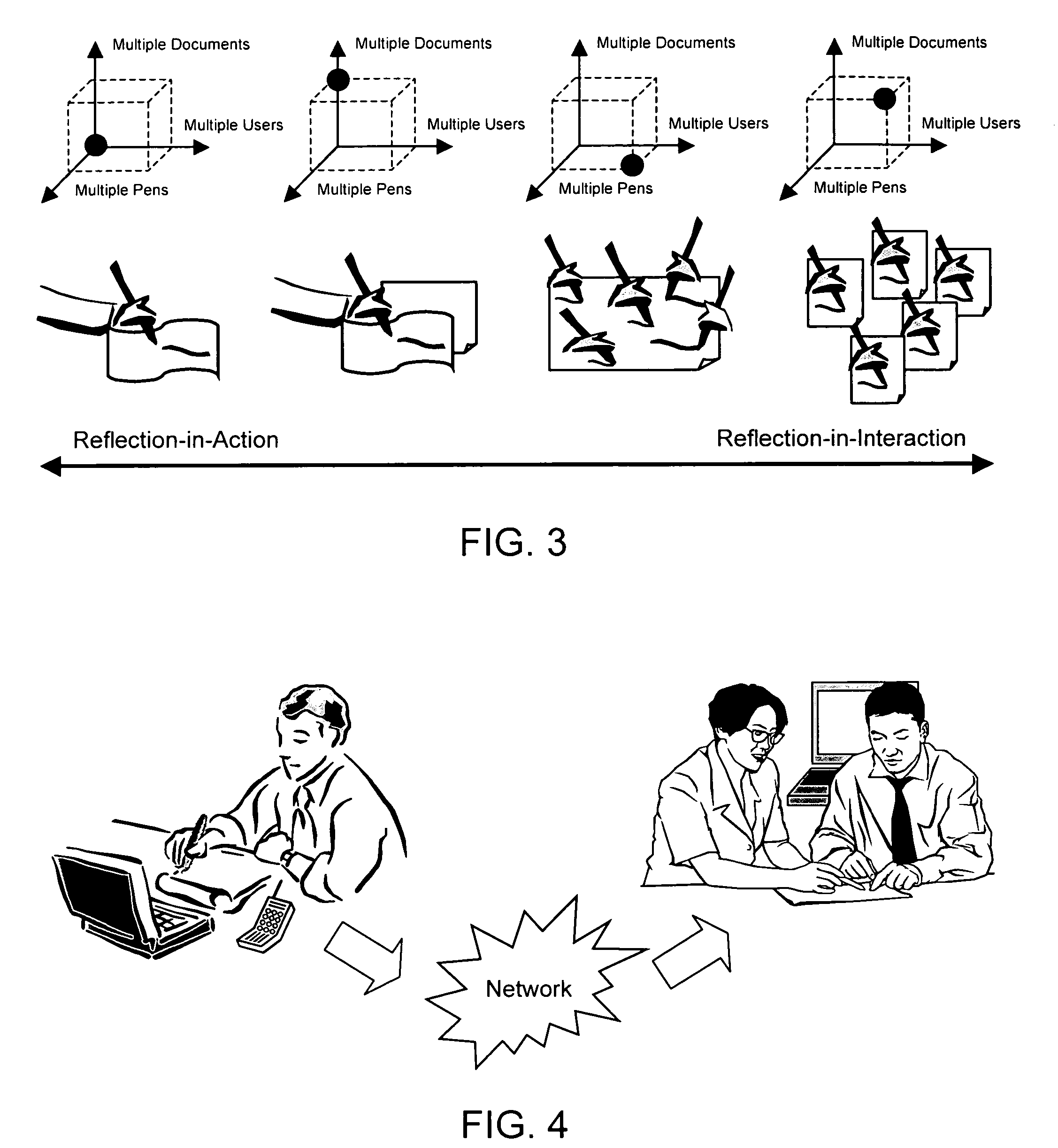Talking paper
a paper and paper-based technology, applied in the field of multimodal information capturing and reuse, can solve the problems of difficult to capture the discourse among users, difficult to share, exchange and reuse hand written/drawn ideas or information, paper is difficult to modify or edit, etc., to achieve convenient management, duplicate and distribute digitally and efficiently, effective, efficient, convenient, and user-friendly fashion
- Summary
- Abstract
- Description
- Claims
- Application Information
AI Technical Summary
Benefits of technology
Problems solved by technology
Method used
Image
Examples
first embodiment
[0053]FIG. 4 illustrates TalkingPaper, focusing on capture, indexing, synchronization and reply of discourse (voice) and sketch on ANOTO paper. This embodiment exemplifies the first scenario illustrated in FIG. 3—reflection-in-action—where there is one expert, one document, and one pen.
[0054] TalkingPaper comprises an interactive graphical user interface (GUI) implemented with enhanced RECALL functionalities. Readers are directed to the above-referenced U.S. Pat. No. 6,724,918 for more detailed teachings on the proprietary RECALL technology.
[0055] The TalkingPaper GUI provides a sketch window that functions as a digital canvas onto which a user can sketch free hand drawings or writings. A 2D CAD object maybe imported as a background image on the canvas. One or more users can annotate the imported image with handwritings and / or a plurality of sketch objects.
[0056] The TalkingPaper GUI also provides a color pallet and a plurality of functionality buttons such as Undo, ClearSketch, L...
third embodiment
[0114]FIG. 17 illustrates the present invention, implementing a client-server scenario with a single document, a single user, and a single pen. Below describes the TalkingPaper Server processing, which includes a Servlet component, a Socket Server component, and a Post Processing Socket Server Component.
TalkingPaper Server Servlet Component
[0115] After the user completed all the sketching actions, he / she sends all the stroke information by clicking on the send pidget, similar to the one shown in FIG. 15. The request of this pen is directed by the aforementioned Global paper look up service to the TalkingPaper Server Java Servlet. The servlet then collects all the strokes information and their timestamps from the pen with the following steps.
[0116] First, the servlet authenticates the request. It then records the ID of the pen using the “PEN” object provided by the ANOTO Java API for digital pens. The servlet stores all the stroke information of a particular pen in a file, which e...
fourth embodiment
[0151]FIG. 20 illustrates the present invention, implementing a multiple clients-server scenario with a single document, a single user, and a single pen per each client. This embodiment provides a multi-client—server system architecture to enable concurrent session creation, capture, indexing, synchronization, and replay streaming of TalkingPaper sessions.
[0152]FIG. 21 show snapshots of a TalkingPaper session being replayed via a browser application embedded with a media player. FIG. 21(a) shows a TalkingPaper session archive presented as a Web page of a browser application. From this page, a user can quickly scan through all of the various sketches that were drawn and captured during the production of the session. A user may select a particular sketch from the session and interact in more detail with the sketch as shown in FIG. 21(b). TalkingPaper is not limited by what is shown or described herein and can be readily implemented with any suitable browser applications, media players...
PUM
 Login to View More
Login to View More Abstract
Description
Claims
Application Information
 Login to View More
Login to View More - R&D
- Intellectual Property
- Life Sciences
- Materials
- Tech Scout
- Unparalleled Data Quality
- Higher Quality Content
- 60% Fewer Hallucinations
Browse by: Latest US Patents, China's latest patents, Technical Efficacy Thesaurus, Application Domain, Technology Topic, Popular Technical Reports.
© 2025 PatSnap. All rights reserved.Legal|Privacy policy|Modern Slavery Act Transparency Statement|Sitemap|About US| Contact US: help@patsnap.com



